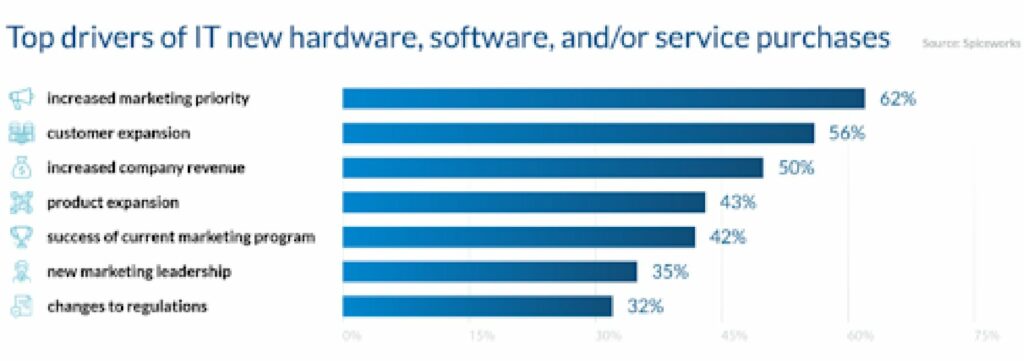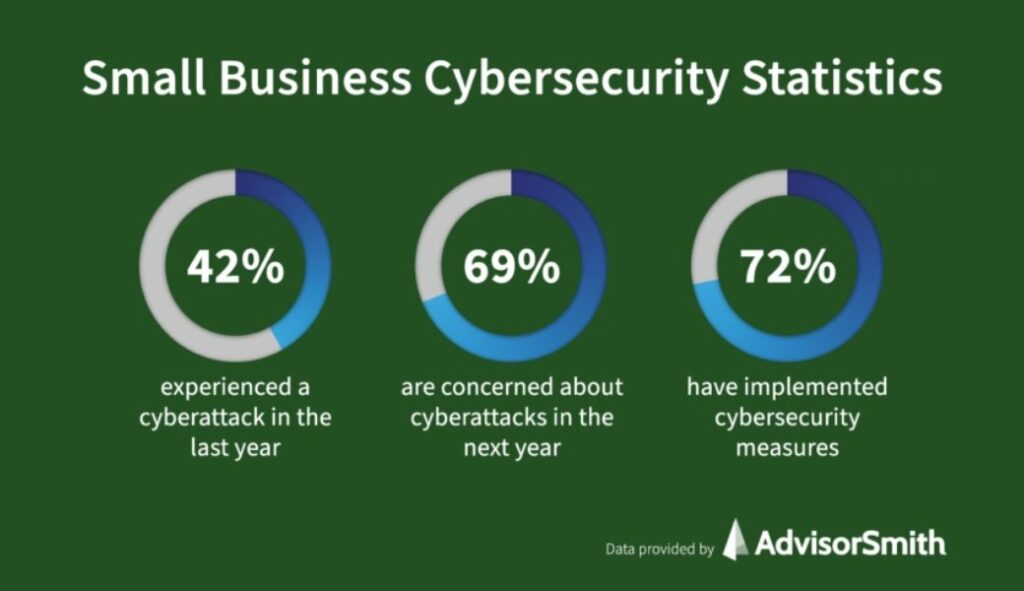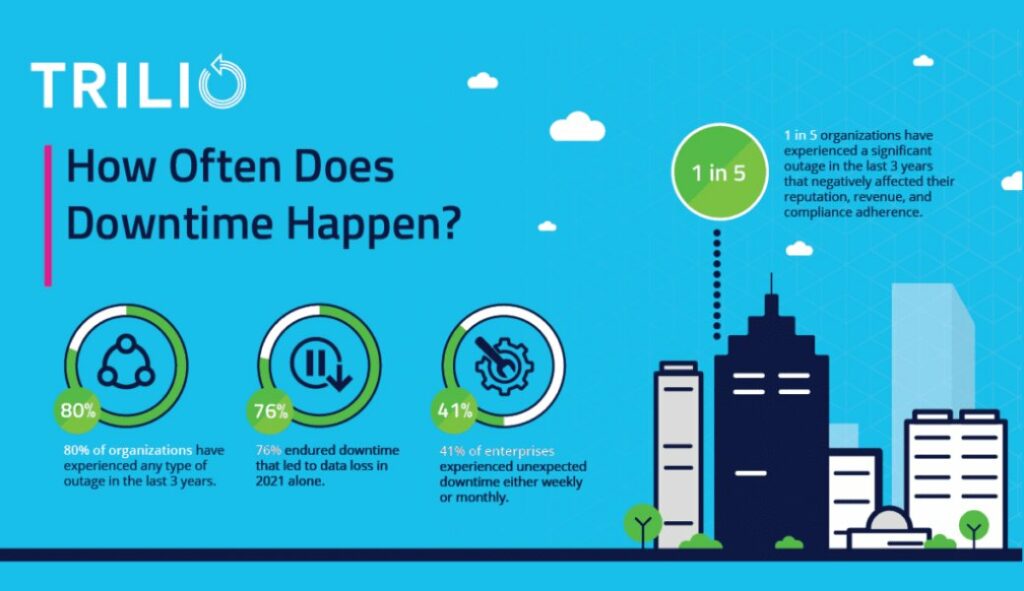How To Determine The Best IT Strategy For Your Business (Overview For Small Businesses)
You don’t need to be an expert to know that technology plays a huge part in your business’s success.
Small medium and large-sized businesses alike need to develop the right IT strategy to ensure they remain competitive and their operations are aligned.
From having a secure website and back-end to having a disaster recovery backup plan.
However, when you’re a small business, planning out all the following can be overwhelming:
- Information technology services.
- Technology solutions and cloud services.
- Cyber security.
- Cyber defense strategy.
- Disaster recovery.
- Voice over internet protocol system.
- Website design and development.
- And more.
That’s a lot, right?
Especially when you’re also planning out how to deliver the best possible solution for your own customers and clients.
Don’t worry. If you’re not sure where to start, you’ve come to the right place.
Below, we’ll cover everything you need to know about planning out your information technology strategy, building out your roadmap, and more.
Here’s what you’ll learn:
- How to come up with the right IT strategy so that it supports your business goals, not the other way around
- Evaluating your current IT infrastructure to identify potential security gaps
- Proven process to develop an IT roadmap for your unique processes and operations
What Is An IT Strategy And How To Determine The Best Technology For Your Business
By definition, an IT strategy (information technology strategy) is a comprehensive plan that lets you plan out what tech should be used and how to meet IT goals.
Strategy and planning here typically involves sitting down with your partners and planning and determining what’s going to be the best resource to make your lives easier.
This is where you’ll want to zoom out and look at the bigger picture of your overall business operations and goals.
In short: Your IT goals and strategy should be supporting your business goals. Not the other way around.
For example, a nursing home is going to have completely different needs than a manufacturing business. The former is likely to store sensitive personal and medical information about its residents that is essential it stays protected because of compliance laws.
Meanwhile, a manufacturing business may not deal with as much sensitive personal information, but it may have valuable intellectual property or trade secrets.
To protect this kind of information, a manufacturing business may need to focus on things like network security, data backups, and employee training on information security best practices.
They may also need to implement measures like firewalls, intrusion detection systems, and other tools to prevent unauthorized access to their networks and systems.
Overall, it’s important for every business to assess its unique IT needs and develop a tailored plan that addresses those needs.
How to align IT strategy with your unique business goals
Aligning your overall business strategy and goals with the change in technology can be hard.
Especially with technology changing all the time.
20 years ago it wasn’t uncommon to have a dedicated server room. But now, you rarely see that thanks to cloud storage and servers.
So, what does this mean when you’re choosing an IT strategy for your business?
Well, there are 2 main requirements you need to take into consideration:
- First, your IT strategy should support your business goals. To determine the best IT technology for your business, look at your business operations and decide what parts could be automated or what you need help with.
- You need the right IT strategy roadmap on how to go from point A to B and how long this will take. Keep in mind the roadmap can always evolve on the go as technology itself is changing constantly.
Probably one of the best ways to execute these 2 requirements is by having a strong IT partner or a team with you each step of the way.

One direct benefit a strong IT infrastructure translates to is an increase in productivity.
For example, if a business is using slow, outdated hardware in their operations (e.g. employees with old laptops or computers), they’re directly losing time and money.
Think about it.
If you have a car that takes you to work in 30 minutes, that’s fine.
But if you’re using the same car 3 years later and now it takes you 2 hours, it’s in your best interest to replace the hardware.
Similarly, companies are losing months of time and money by using old equipment.
This is the role the right IT strategy plays in your business operations. It helps your day-to-day operations and project goals.
Then, to measure the success of your IT strategy, you should be looking at:
- Key performance indicators (KPIs): Custom performance for your unique/custom business goals. E.g. availability, incident resolution time, user satisfaction, compliance, and time to implementation.
- Return on investment (ROI): Overall ROI on IT strategy. Comparing the costs of implementing new technology to the benefits it brings or prior situation.
- User adoption rates: If IT strategy is meeting needs and expectations in a company.
- IT service delivery: Quality of IT services delivered, including factors like uptime, response times, and issue resolution rates.
- Business outcomes: How the IT strategy is delivering the intended business outcomes, such as increased productivity or revenue growth.

Source: FinancesOnline
Many small businesses stick to outsourcing everything to one “IT guy”. Which is not the best approach.
The reason this often fails is because if they get sick, take a leave, or go on a vacation, your security will be at risk.
Meanwhile, with an outsourced IT organization, your employees focus on what they’re good at and you won’t have to rely your security on just one person. Allowing for smoother and more convenient operations.
Now, if you don’t want your operations to be at risk, here’s what you need to know about finding security gaps.
Evaluating Your Current IT Infrastructure And Strategy To Identify Security Gaps
Identifying security gaps within your operations is a crucial step in developing an effective IT strategy.
This step involves finding areas within your business where you may be vulnerable to cyber threats and taking steps to mitigate those risks.
And this also ties back into your business operations. Partly because the weak point of many businesses now has to do with human behavior.
That’s because, it’s the employees who are:
- Checking and replying to emails.
- Clicking on links.
- Doing bank transfers.
- Opening and installing programs.
- And so on.
And all it takes is one weak spot for the whole chain to get corrupted.
So, how can small businesses identify gaps within their IT infrastructure?
Generally, the process goes like this:
- Conduct a thorough IT infrastructure audit to identify gaps and deficiencies in the current setup.
- Gather feedback from employees regarding their current IT tools and operations. In terms of what is working well and what needs improvement.
- Regularly analyze system performance and identify any bottlenecks or areas of high resource utilization that may be indicative of infrastructure gaps.
- Review security logs and incident reports to identify any potential security gaps or recent breaches in the infrastructure.
- Research and benchmark against industry best practices and standards to identify gaps in compliance, security, or infrastructure.
According to Verizon, small businesses account for 28% of data breach victims and more than 80% of breaches involve brute force or stolen credentials.

Source: AdvisorSmith
Security is another important issue in a business’s IT infrastructure.
If you’re doing all of your IT processes in-house, it’s going to be considerably harder to identify your gaps and have one person attempt to take care of everything. Especially if it covers multiple departments and operations of a business.
So, now, let’s now take a look at how small businesses can develop an IT roadmap and strategies right for them.
How Small Businesses Can Develop An IT Roadmap And Select The Right Technologies
First, you have to prioritize which parts of your IT strategy are more important to focus on.
Typically, this is based on what the most urgent things are that need to happen
For example, if your business relies heavily on email communications, you may want to prioritize email security measures such as spam filters, email encryption, and multi-factor authentication.
Or maybe you use a payment processing system that handles sensitive financial information daily. Then that may be more vulnerable to cyber threats than a non-critical system like an employee intranet.
One way of looking at the opportunity cost of your information technology infrastructure is by asking yourself the following question:
How long can I afford my business being down?
The cost of IT downtime often surprises many people.
According to Carbonite, the cost of network downtime for small businesses on average can cost up to $427 per minute.

Source: Trilio
Of course, there are many different things to consider as there is a large degree of variance. Such as your specific niche, risk tolerance, current business operations, and so on.
And there are also the indirect costs of IT downtime to consider. Such as time loss, opportunity cost, loss in productivity, and so on.
To prepare for this, an audit is necessary which takes a look at your current operations. Starting with your antivirus, firewall, MDR (managed detection and response), and more.
Since every business is different, a general business IT roadmap might include the following steps:
- Understand the purpose of your technology roadmap.
- Get the input of the current technology stack.
- Audit operations.
- Pick out the top priorities and urgent fixes necessary.
- Construct an actionable roadmap with specific steps to take.
From there, it comes down to a lot of information technology best practices when implementing the strategy.
And to get an overview of how the roadmap is going, you continue doing 30-60-90 day audits to assess performance over time.
Next steps for small businesses deciding on IT strategy
Overall, creating an IT strategy is essential for any business regardless of its size.
However, planning out a strategy or roadmap can be overwhelming, especially if you don’t have the expertise or resources to handle everything on your own.
Which is why you need to organize everything in one solid IT strategy.
For that, you should work backward.
Ask yourself: What are my business goals, first? And how can the right IT technologies support that?
To determine the best IT technology for your business, look at your business operations and decide which parts could be automated or need assistance.
Use key indicators to then measure the performance. Such as specific KPIs, ROI, user adoption rates, IT service delivery, and of course, business outcomes.
Once you have identified those needs, it’s essential to create a roadmap that outlines the steps for achieving those goals.
The roadmap should include timelines, milestones, and action items for each stage.
Conclusion
Crafting an effective IT strategy for your business is like building a sturdy house.
Just like a house needs a strong foundation and a well-designed layout, a good IT strategy requires careful planning and a clear implementation roadmap.
Similarly, your IT strategy should support your business goals, not the other way around.
Which is why you should always be looking at this based on your business goals and current operations.
During an IT audit, you’ll be asking yourself questions like:
- Are things safe the way they are now?
- Are we losing time and employee productivity?
- What can be made better?
- And more.
This way, you assess the overall health of your IT infrastructure, identify areas for improvement, and optimize current business operations.
And by working with the right IT partner, like MIS, you can build out an infrastructure that supports your unique business goals.


